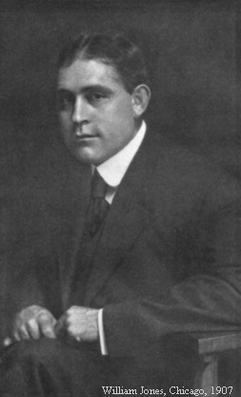 ♫ = text and audio
♫ = text and audio
Baadwewdangig “Those that come sounding” is a project to convert Volume 1 of Ojibwe Texts, collected by William Jones, from the obsolete phonetic orthography into the current Fiero (aka double vowel) orthography. This collection of Ojibwe stories written in the Ojibwe language is a treasure that should be shared with Ojibwe (Anishinaabemowin) language learners, teachers, and scholars. This website has some of the transliterated texts as well as some audio files so that students can hear the words spoken. More transliterated texts and their audio files will be added as they are processed.
Baadwewdangig started when Dr. Alana Johns met Alan Corbiere at a meeting and asked if students enrolled in Fall 2012 offering of the University of Toronto Linguistics Department course Language Revitalization (LIN458) could assist in any projects. Mr. Corbiere had been working on a long term project transliterating the texts collected by Fox Linguist William Jones, and said that the students could assist in transliterating the stories collected. The Revitalizing Languages course prepared these students to understand the complex issues that communities and language activists within these communities face, in their efforts to strengthen their language.
Background on the Texts
Between 1903 and 1905, ethnographer William Jones transcribed several volumes
of traditional stories in the Western Ojibwe dialect, using a highly detailed phonetic
alphabet that is no longer recognized or used in linguistics or in the Anishinaabe
(Ojibwe) communities. The Ojibwe Transliteration Team has begun an automatic
transliteration of these stories based on the original transcription key provided by
Jones. This provides a basis upon which someone with full knowledge of Ojibwe
can complete the transliteration process of accurately converting the stories to a
modern Ojibwe orthography.
Debaajmojig (Storytellers): All of the Awaasizii doodem (Bull-Head Totem)
Listed below are the storytellers. It is through their patience, and William Jones’
effort that these stories have been transmitted to this generation. It is for this reason
that we name this project Baadwewedamojig ‘Those who come sounding,” because
these stories from a different era have been resuscitated to once again teach the
Anishinaabeg in this modern era of mass media and digital interconnectivity.
Marie Syrette – Gaagige-pinesi-kwe (‘Forever-Bird-Woman’) – Fort William, Ontario
John Pinesi (Penessi, Penassie), chief of the Fort William Ojibwas (surname is
abbrev. of Gaagige-pinesi – ‘Forever-Bird’)
Waasaagoneshkang (‘He-that-leaves-the-Imprint-of-his-Foot-shining-in-the-Snow’)
– “Pelican Lake, near the Bois Fort Reservation, in Minnesota” “grew up on Rainy
River, Rainy Lake, and the Lake of the Woods”
His nephew, Midaasoganzh (‘Ten-Claw’) – Bois Fort
Maajiigaaboo (‘Begins-to-Rise-to-his-Feet’), “chief of the Bear Island Ojibwas of
Leech Lake in Minnesota”
Authorship, as far as it’s known:
Series 1 (1-18): Bois Fort, Waasaagoneshkang
Series 2 (19-32): Bois Fort, probably Midaasoganzh
Series 3 (33-38): Bois Fort, probably Midaasoganzh
Series 4 (39): Bois Fort, Waasaagoneshkang
Series 5 (40-42) Bois Fort, probably Waasagoneshkang
Series 6 (43): Leech Lake, Maajiigaaboo
Series 7 (44-56): Fort William, Penessi
Series 8 (57-63): Fort William, Syrette
Links
Profile on Alan Corbiere and Anishinaabe language teaching in M’Chigeeng First Nation:
Rand Valentine’s Website
Ojibwa texts collected by William Jones, available online
Baadwewdangig started when Dr. Alana Johns met Alan Corbiere at a meeting and asked if students enrolled in Fall 2012 offering of the University of Toronto Linguistics Department course Language Revitalization (LIN458) could assist in any projects. Mr. Corbiere had been working on a long term project transliterating the texts collected by Fox Linguist William Jones, and said that the students could assist in transliterating the stories collected. The Revitalizing Languages course prepared these students to understand the complex issues that communities and language activists within these communities face, in their efforts to strengthen their language.
Background on the Texts
Between 1903 and 1905, ethnographer William Jones transcribed several volumes
of traditional stories in the Western Ojibwe dialect, using a highly detailed phonetic
alphabet that is no longer recognized or used in linguistics or in the Anishinaabe
(Ojibwe) communities. The Ojibwe Transliteration Team has begun an automatic
transliteration of these stories based on the original transcription key provided by
Jones. This provides a basis upon which someone with full knowledge of Ojibwe
can complete the transliteration process of accurately converting the stories to a
modern Ojibwe orthography.
Debaajmojig (Storytellers): All of the Awaasizii doodem (Bull-Head Totem)
Listed below are the storytellers. It is through their patience, and William Jones’
effort that these stories have been transmitted to this generation. It is for this reason
that we name this project Baadwewedamojig ‘Those who come sounding,” because
these stories from a different era have been resuscitated to once again teach the
Anishinaabeg in this modern era of mass media and digital interconnectivity.
Marie Syrette – Gaagige-pinesi-kwe (‘Forever-Bird-Woman’) – Fort William, Ontario
John Pinesi (Penessi, Penassie), chief of the Fort William Ojibwas (surname is
abbrev. of Gaagige-pinesi – ‘Forever-Bird’)
Waasaagoneshkang (‘He-that-leaves-the-Imprint-of-his-Foot-shining-in-the-Snow’)
– “Pelican Lake, near the Bois Fort Reservation, in Minnesota” “grew up on Rainy
River, Rainy Lake, and the Lake of the Woods”
His nephew, Midaasoganzh (‘Ten-Claw’) – Bois Fort
Maajiigaaboo (‘Begins-to-Rise-to-his-Feet’), “chief of the Bear Island Ojibwas of
Leech Lake in Minnesota”
Authorship, as far as it’s known:
Series 1 (1-18): Bois Fort, Waasaagoneshkang
Series 2 (19-32): Bois Fort, probably Midaasoganzh
Series 3 (33-38): Bois Fort, probably Midaasoganzh
Series 4 (39): Bois Fort, Waasaagoneshkang
Series 5 (40-42) Bois Fort, probably Waasagoneshkang
Series 6 (43): Leech Lake, Maajiigaaboo
Series 7 (44-56): Fort William, Penessi
Series 8 (57-63): Fort William, Syrette
Links
Profile on Alan Corbiere and Anishinaabe language teaching in M’Chigeeng First Nation:
Rand Valentine’s Website
Ojibwa texts collected by William Jones, available online
